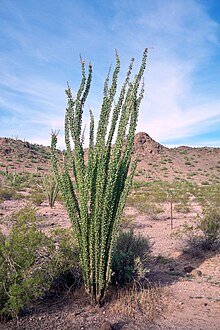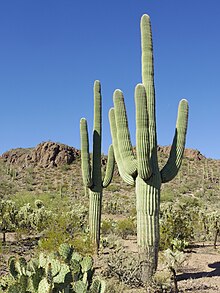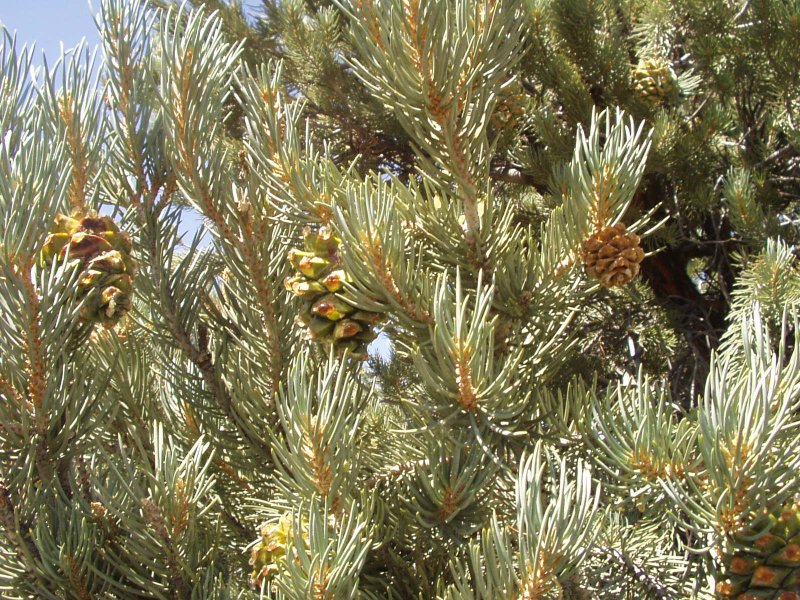After six months working and sleeping in Arizona’s canyons, deserts, and forests, the “scary” creatures became familiar friends to me, and I learned how to not get bit/stung/poked. I was glad to have that knowledge going into my AZT thru-hike, so to benefit any other newcomers to the southwest, here’s an introduction to some of the flora and fauna you’ll see in Arizona.
AZT Wildlife
Rattlesnakes
I’m starting with this one because it seems to be people’s biggest fear—but for me, just knowing a few key facts about rattlesnakes really helped to remove any concern.
Firstly, rattlesnakes aren’t going to hunt you down or chase after you. So the only type of encounter you’ll have with rattlesnakes is you entering their space.
When that happens—because you’ll definitely enter rattlesnakes’ turf while thru-hiking the Arizona Trail—you’ll usually hear the rattle sound as a warning. There won’t always be a rattle sound, though, which is why you must keep your eyes scanning as well.
When you see a rattlesnake:
As soon as you spot/hear a rattlesnake, freeze. Then slowly back away from the snake. (Sudden movement can be seen as a threat.)
If the snake stays where it is, find a way to get around it—your goal is to not disturb the snake further, so it won’t feel threatened. Go off trail and keep a generous distance from the snake. Don’t forget to stay vigilant as you trek off trail to go around the rattler—there could be more in the vegetation! Just go slowly and use your trekking poles.
If the snake is in motion, keep a distance and watch to see where it’s going. While hiking through the Grand Canyon, I spotted a rattlesnake who was slowly traversing the trail in front of me. To my right was the canyon wall, and to my left was a big drop-off, so I paused and waited for it to cross, marveling at the creature in front of me. When the snake was far enough off trail that I felt it was safe to pass, on I went.
Secondly, rattlesnakes are afraid of you. When they’re startled, they want to retreat to safety. Sometimes, the safest spot for the snake could be behind you. If one happens to slither towards you, know that it’s only retreating to a safe spot—not following you. So just keep backing up and giving it space.
Thirdly, rattlesnakes do not want to bite you. If they feel threatened, however, they’ll defend themselves. Most of the people who get bitten accidentally step on a rattlesnake. So, don’t step on rattlesnakes!
There are some simple precautions you can take to make sure you don’t accidentally step on or threaten a rattlesnake while hiking.
Precautions to take:
Don’t put earbuds in. I would sometimes listen to podcasts while hiking, but I only put in one earbud when doing so. I also strategically chose sections for podcast-listening—like dirt roads where the trail was super wide and visibility was much better. And finally, I kept my guard up, eyes always scanning for rattlers.
Stay alert. On the same vein, keep your eyes and ears open.
Never step over a rock or log. You will have to go over these things, but there could be a rattlesnake on the other side/underneath. So whenever there’s a downed tree across the trail, for example, the key is to stand on top of the log first—or in my case, tap the top with your hiking poles and then step onto the log with both feet—before stepping down to the other side. Snakes could be in these places, so if your leg coming over and down is the first thing they see/hear, you’re likely to get bit. Alerting any possible creatures with the sound of your hiking poles first, then standing on top of the log to get a view of the other side (and to make noise) protects you from such bites.
Tap, tap, tap. I got into the habit of tapping any rock, log, stump, or area with my hiking poles before plopping down for a break.
If you get bitten:
- Stay calm. (I know, I know.) Walk, don’t run.
- Call 9-1-1. Get to a hospital as quickly as possible.
- Remove any jewelry or tight-fitting clothing from the bite area in case of swelling.
The main thing is to get to a hospital as soon as you can. Notice what’s not included above: You don’t need to know what type of snake it was, you’re not doing anything else to your body or the bite area. Leave it be. Get to a hospital.
Rattlesnake bites are serious, but rarely fatal in humans. That said, when I was getting Wilderness First Aid trained at RMYC last summer, I learned that a crew leader of theirs from the previous year was bitten by a rattlesnake (post-season, not while crew leading) when stepping over a log, and he died. So that really engrained the “do not step over logs” rule in my mind.
I can’t reiterate enough, just stay attentive and aware. There was a week during my hike when all of a sudden the snakes were out. I started repeating the mantra “a snake a day keeps the fear at bay” after each snake encounter.
Don’t let your guard down! While hiking down the southern rim of the Grand Canyon on the South Kaibab Trail, which was full of tourists, I spotted a rattlesnake just off trail, moving around to get under some rocks. Up ahead people were jumping to these rocky areas for pictures, breaks, etc. without second thought. I waited until the rattlesnake stopped gliding and was settled under his rock, then warned the hikers coming behind me where the rattler was.
Follow these tips and you’ve got little to worry about!
Scorpions

I actually didn’t see a single scorpion during my thru-hike, but they’re certainly out there. I saw them often while doing trail work during my time with ACE, likely because we were digging and moving rocks. A crew lead of mine got stung once while kicking gravel rocks around to make a flat spot for her tent, wearing sandals.
So, whenever picking up a rock (to bang in tent posts, for example), don’t just blindly grab it. Turn it away from yourself slowly, or you can flip it over with your shoe to make sure there’s not a scorpion under there. Be mindful of scorpions too when sitting on rocks on the ground.
These guys can be tiny! (Much smaller than the one pictured above.) And the tinier they are, the worse their sting feels.
If you get stung, you should be fine without medical attention, it’s just gonna hurt. Real bad. That said, all people respond differently, so pay attention to your body and take action accordingly.
Javelina
These are javelinas! They look like wild boar. So if you hear some snorting and clip-clopping of hooves, there are probably javelina nearby. Give them their space as you would any wild animal.
Gila Monster

The gila monster (pronounced hee-la) is the largest lizard native to the United States, and the only venomous one. Its jaw has a locking mechanism, so when it bites down, it won’t let go.
Don’t worry though—these guys are very slow moving, so keep your distance and you should have nothing to worry about. If you get to see a gila monster waddling about while in Arizona, feel lucky to be in the presence of this creature (and mark that BINGO spot!). I didn’t see one for my whole six months in ACE, but did spot one while thru-hiking. It was the best day!
Horny Toad

This is a horny toad lizard, and they’re cute as ever! Fun to spot, it’s an animal you can keep your eyes peeled for while hiking.
Deer / Elk
You’ll also encounter many deer and elk along the trail, especially in the forests.
Bear
There are absolutely black bears in Arizona! Hello, mountains and forests. I saw a bear one day while hiking, it was just off trail chilling in a tree, before entering the Mazatal Wilderness. Black bears are skittish and afraid of people, so making noise should scare them off. (We both scared each other that day!) Especially if you see them in the daytime, there is nothing to fear with seeing a black bear.
What you want to avoid, however, are bears looking for food in your tent at night. Now, when working on conservation corps, we really got it drilled into our heads to never have any food in your tent. Nothing. No smellies either (toothpaste, etc.). Never in your tent, because they attract animals. (And bears have incredible noses; they can smell food a mile away.) These are great rules to follow.
That’s why I could not believe it last summer when my friend said he uses his food bag as a pillow while thru-hiking. You what?! But I learned this is common among thru-hikers, and I ended up sleeping with my food almost every night while thru-hiking the AZT as well.
There were two or three times that I did put up a bear hang on the AZT—because I was in areas more highly trafficked by humans. When you have an area where there are lots of people who aren’t following LNT to a tee—like National Parks, campgrounds, or towns next to a forest—nearby bears could get used to human sources of food (trash cans, tents, coolers, etc.) “Humanized” bears start relying on this food and aren’t afraid to enter tents, coolers, cars, etc.—and lose their fear of humans too. Those are the bears you want to be afraid of.
If I were weekend hiking/camping, I’d 100% do a bear hang. If I were near high-use campgrounds or heavily human-used backcountry areas with bears, I would also do a bear hang. A state other than Arizona whose landscapes I was unfamiliar with? Bear hang. But because I was thru-hiking, because of the lower volume of people on the Arizona Trail, because of my previous bear knowledge/experiences in CO and AZ, and because of the non-bear territory desert sections, I slept with my food each night. I’m not suggesting you do the same, just sharing what worked for me.
Coyote; Mountain Lion
There are coyotes and mountain lions throughout Arizona. I loved hearing their howls at night, wondering what they were communicating to one another.
Coatimundi

I was beyond surprised to see a family of monkeys traverse the rock wall when I was picking up my resupply box at Colossal Cave. What is this?! Monkeys in Arizona?! I learned they are coatimundi—and are not a monkey at all, but rather in the same family as raccoons.
You’ll see more wildlife than this on the hike, but that’s a solid start. Now, onto the plants!
AZT Plants
I don’t know much about these plants, but wanted to include names and photos so that you can identify some of the flora you’ll see.
“Teddy Bear” Cholla

Teddy Bear cholla may look fuzzy—but you definitely do not want to touch this cactus! The balls fall off and roll around and love to get stuck on a passing shoe.
Ocotillo

Easy to identify, ocotillo (oh-koh-tee-yo) is one of my favorite desert plants. I just love the look of it, bony fingers reaching up towards the sun. And although ocotillo has spines, it’s a shrub, not a cactus.
Prickly Pear

Remember the hog-like javelinas? They eat prickly pear!
Saguaro

Saguaro can live for over 150 years. With that thought in mind, they often led me to marvel at all these cacti have witnessed in their lives, how much time they’ve spent in that same spot.
Palo Verde
Palo verde is Spanish for “green stick,” which is a great name for this tree, whose branches are green.
Ponderosa Pine

Ponderosa smell lovely!
Juniper

I identify Juniper trees by these leaves:

Pinion Pine

And that’s our intro to plants and wildlife along the Arizona Trail! Have any questions? Corrections? Something you’d love to share? (Have a favorite creature or plant from Arizona?) You’re welcome to leave a comment below.
Thanks for reading, and enjoy your day!